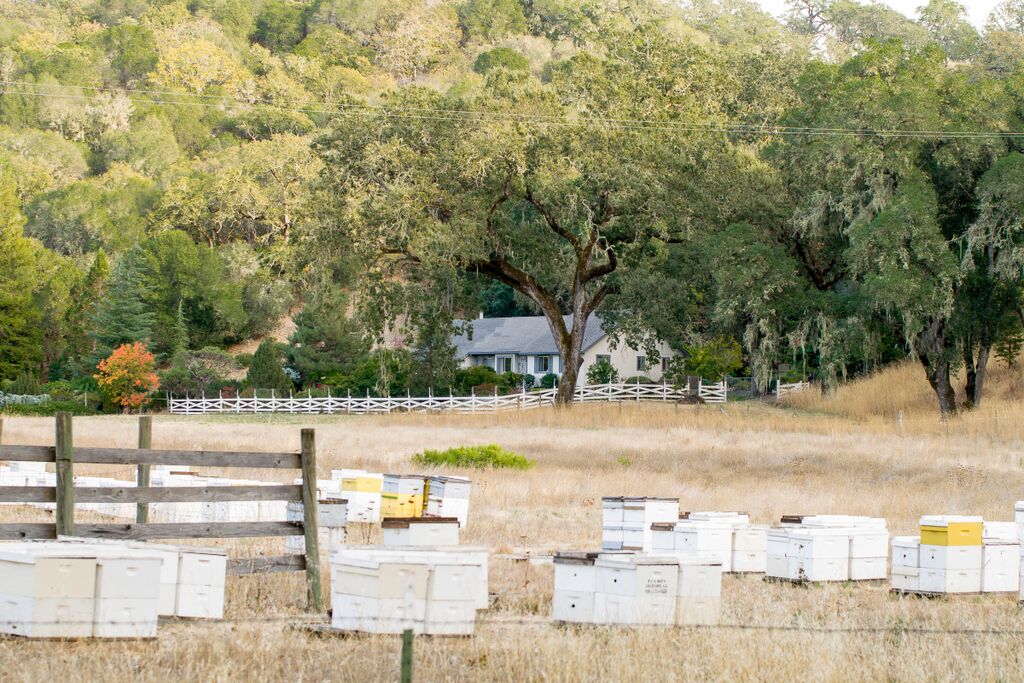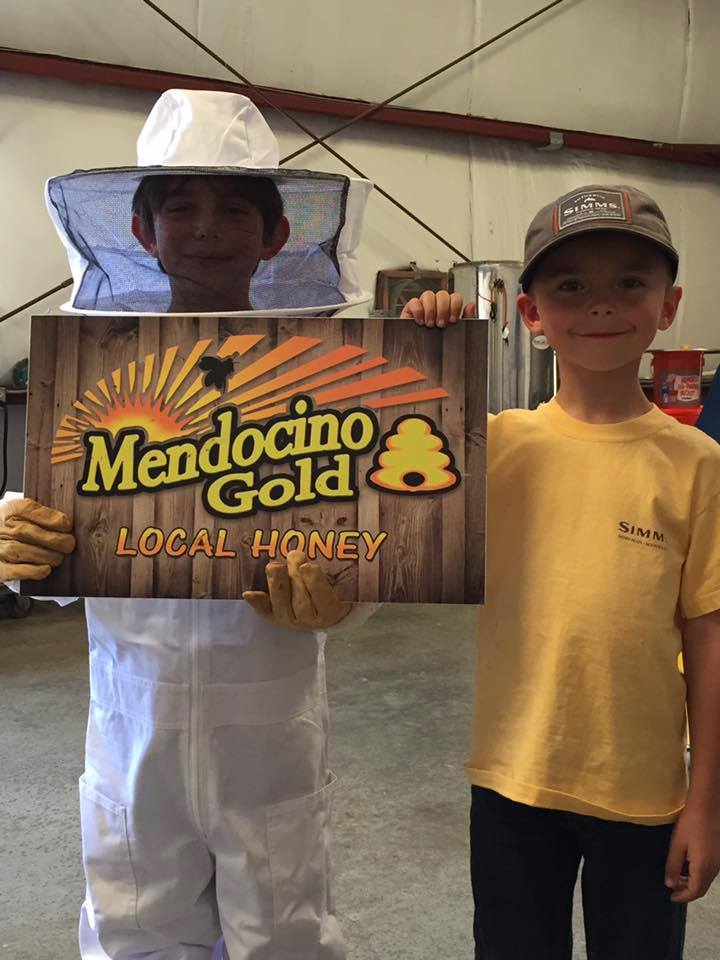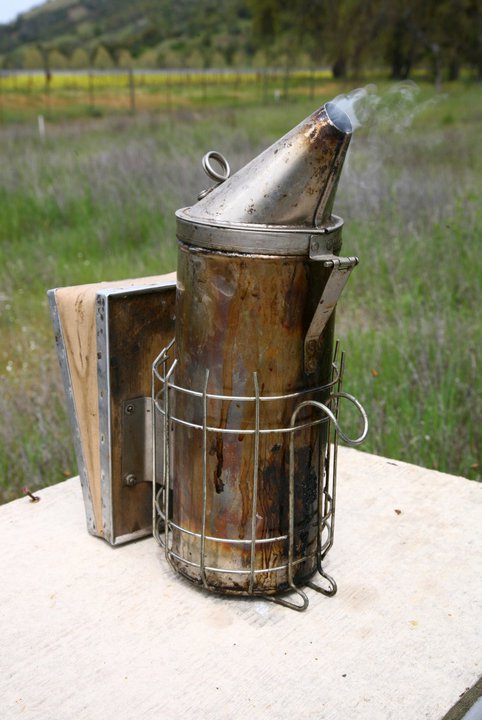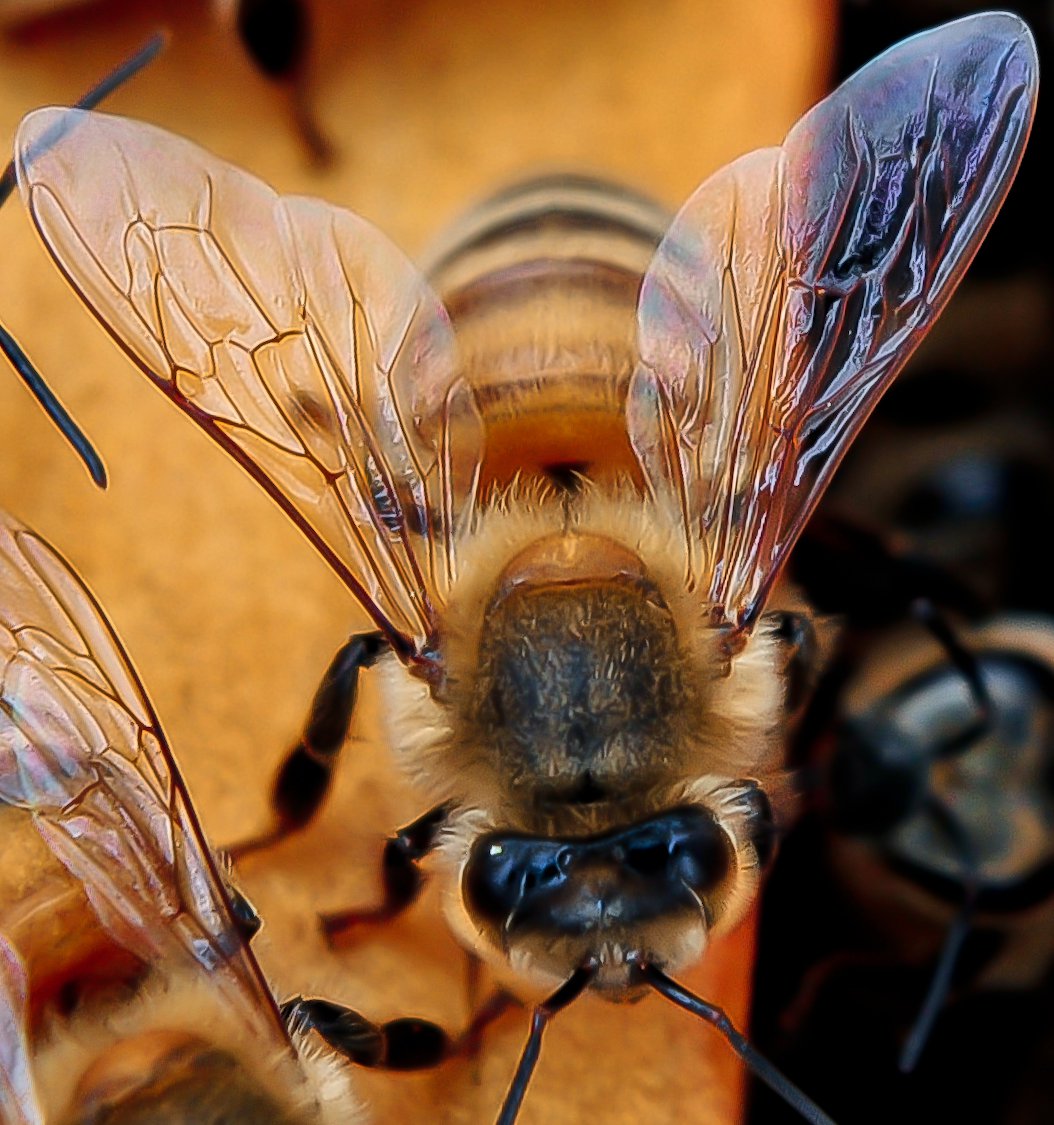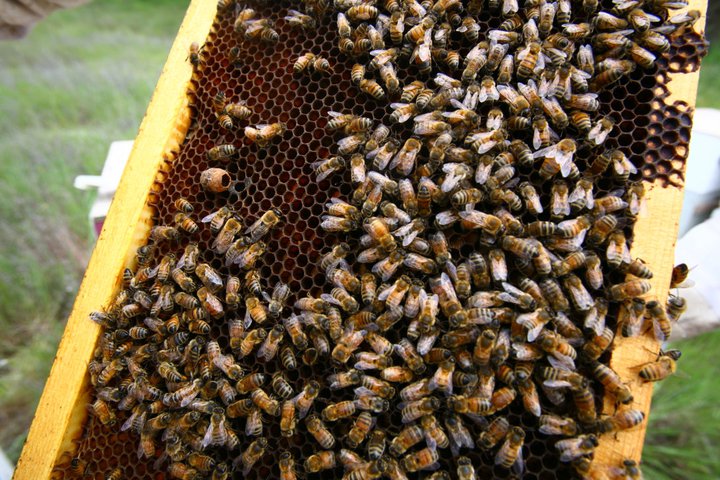We purchased our first bee hive back in 2008 with the intent to produce Mendocino County’s finest honey. As spring approached the bees began to buzz in what they would now call their home, Yokayo Ranch. This floral, rich valley located on the outskirts of Ukiah soon became abloom with star thistle, purple vetch and blackberry blossoms. As the bees worked diligently the honey flow began. As summer drew to an end we began our first extraction and to our surprise Mendocino Gold was born and the results were sweet!
Mendocino Gold has grown to over 1,000 healthy and productive hives. We now produce substantial batches of gourmet honey derived from the beautiful hills, valleys and mountains of Mendocino County. With a stunning array of flowers throughout the season, many varietals of honey can be produced based upon hive location. Just as a vintage wine tastes different from year to year honey also shares this characteristic based upon climate and rainfall. With such a vast natural landscape he bees are able to flourish which in turn creates a luscious, golden nectar also known as Mendocino Gold honey.
Honey is honey, it’s just that simple. A bottle of pure, raw honey contains the natural sweet substance produced by honey bees from the nectar of plants or secretions of living parts of plants. Nothing else!
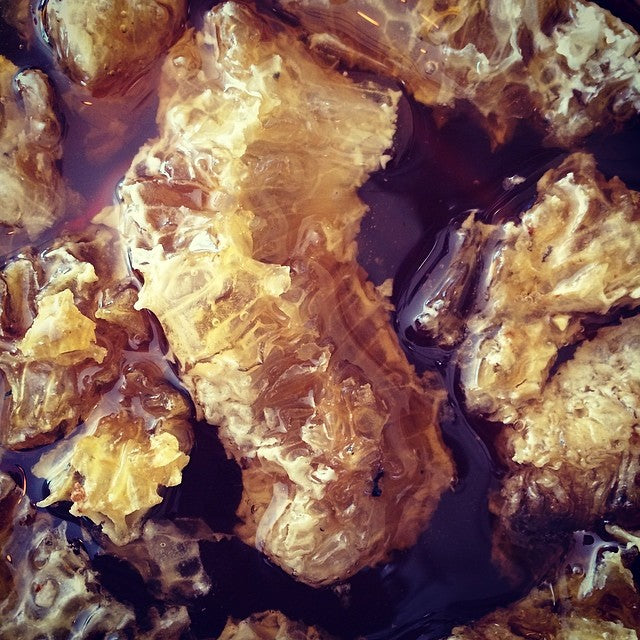
The Difference Between Processed Honey and Raw Honey
Raw honey is not filtered or heated. Real raw honey contains all the live enzymes, pollen, propolis and floral essences that the honeybees put into it. The bees determine the color, flavor, and texture of our honey by the varieties of flowers and herbs they forage.
In order to maintain the highest level of taste and nutrition in our raw, unfiltered honey, we never heat our honey to more than 100°, just enough to get it into the jar.
When honey is processed commercially, it is finely filtered and heated. Filtering removes most pollen particles and heat can change the color, taste and destroy vitamins. Additives and sugar syrup have even been discovered in some commercially processed honey found in stores as well.
For at least 2700 years, honey has been used to treat a variety of ailments through topical application, but only recently have the antiseptic and antibacterial properties of raw honey been chemically explained. Antibacterial properties of real raw honey are the result of the low water activity causing osmosis (honey literally sucks the water out of bacteria), hydrogen peroxide effect and high acidity.
Regardless of preservation, honey may crystallize over time. Crystallization does not affect the flavor, quality or nutritional content of the honey, though it does affect color and texture. The rate is a function of storage temperature, availability of "seed" crystals and the specific mix of sugars and trace compounds in the honey. Most honeys crystallize fastest between about 50 and 70 °F (10 and 21 °C). If you prefer un-crystallized honey, simply place your jar in a pot of warm water for several hours to re-liquify.
About Honey
How do bees make honey?
When a honey bee takes nectar from a flower, she stores it in a ‘honey sack”. When this honey sack is full, she returns to the hive, deposits the drops of nectar into the honeycomb and evaporates the water out of the nectar by fanning her wings. Once the honey has aged wax is used to seal it in the comb, which keeps it clean and safe.
• A honeybee makes 154 trips for one teaspoon of honey.
• A colony produces 60 to 100 pounds of honey a year.
• To gather a pound of honey, a bee flies a distance equal to more than three times around the world. It takes two million flowers to make one pound of honey.
What kinds of bees are there?
There are three classes of bees: queens, workers, and drones. In a hive, there can be hundreds of drones, thousands of workers, but always just one queen.
The Queen
• She is the only bee able to lay eggs.
• She never leaves the hive and is constantly attended by workers.
• She only uses her sting against other queens.
• She lays up to 2,000 eggs per day
The Worker
• Workers are all sterile females.
• If born during the active spring or summer months, they live for only four to five weeks; during winter, they live for a few months.
• They perform many tasks in and out of the hive, including: gathering pollen, making honey, feeding the other bees, producing beeswax, building honeycomb and protecting the hive.
The Drone
• Drones are males.
• Drones don’t work, can’t feed themselves and have no stinger.
• They live for only about three months.
• Their only task is to make with queens.
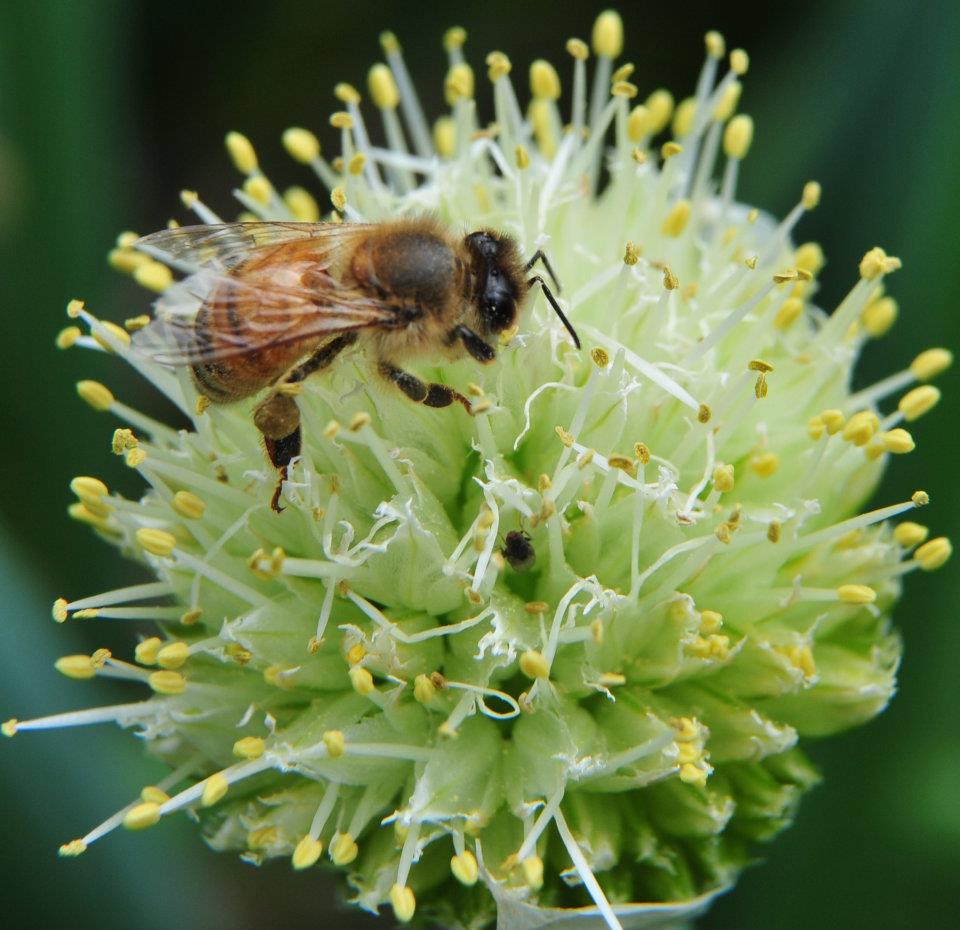
Our Varietals of Honey
Local Wildflower Honey
Wildflower honey is exactly what it sounds like. It’s derived from a variety of unique and diverse native wildflowers and plants scattered throughout Mendocino County which are blooming during the summer months, which makes it popular to help alleviate allergies. It's a thicker honey and the taste varies from year to year based on what's in bloom. This honey has a delightful taste and is slightly darker in color. Darker honey has more vitamins, minerals, and antioxidant properties compared to lighter honey. Wildflower Honey varies in flavor and color from location to location. The taste, aroma and flavor will vary from season to season, depending on which flowers are dominant at the time the nectar is collected. Our wildflower honey is very popular and is our bestseller.
Local Star Thistle Honey
Star Thistle honey originated in the Mediterranean from the yellow star thistle plant (also known as knapweed) and migrated to the US in the mid nineteenth century. Considered a noxious weed by many, this star thistle clustered amongst thorns produces yellow star thistle honey, which is relished by honey enthusiasts. Star thistle, blooming mid-summer, grows on the dry hills and along the road-sides of Northern California. It is considered to be a noxious weed, however, the bees love the nectar from this prickly plant. It has a unique, candy-like flavor which is why beekeepers seek out hive locations in the densely flowered areas. It’s wonderful to bake with as its light flavor never overpowers the subtle flavors of cakes, cookies and more.
Orange Blossom Honey
Upon opening a jar of Orange Blossom honey you’re taste buds will be amazed. This is due to the juicy attributes of the citrus fruit flower. Orange blossom honey has a soft, golden color that matches its delicate aroma and taste. It’s perfect for spreading on toast and pancakes and makes a delicious topping for ice cream, yogurt or fruit. Although it’s not a local honey, we know you’ll enjoy its mild taste with its subtle hints of sweet orange nectar.
Crop Dependence on Honey Bees
The world's growing population means more bees are needed to pollinate the crops to feed more people. According to the U.N. report, of the 100 crop species that supply 90 percent of the world's food, bees pollinate more than 70 percent. Noting that humans seem to believe that they can operate independent of nature through technological innovations, Achim Steiner, the executive director of the UNEP said, "Bees underline the reality that we are more, not less dependent on nature's services in a world of close to 7 billion people."
The almond crop is entirely dependent on honey bee pollination. Without honey bees, there would be no almonds. More than 80 percent of the world’s almonds are produced in California. To pollinate California’s approximately 740,000 bearing acres of almonds requires more than a million colonies of honey bees. Numerous other crops are also percent dependent on honey bee pollination. Some of those crops include apples, avocados, blueberries, cherries, cranberries and sunflowers. Other crops such as cucumbers, kiwi fruit, melons and vegetables are also pollinated by honey bees.
When honey bees are in danger, we’re all in danger.
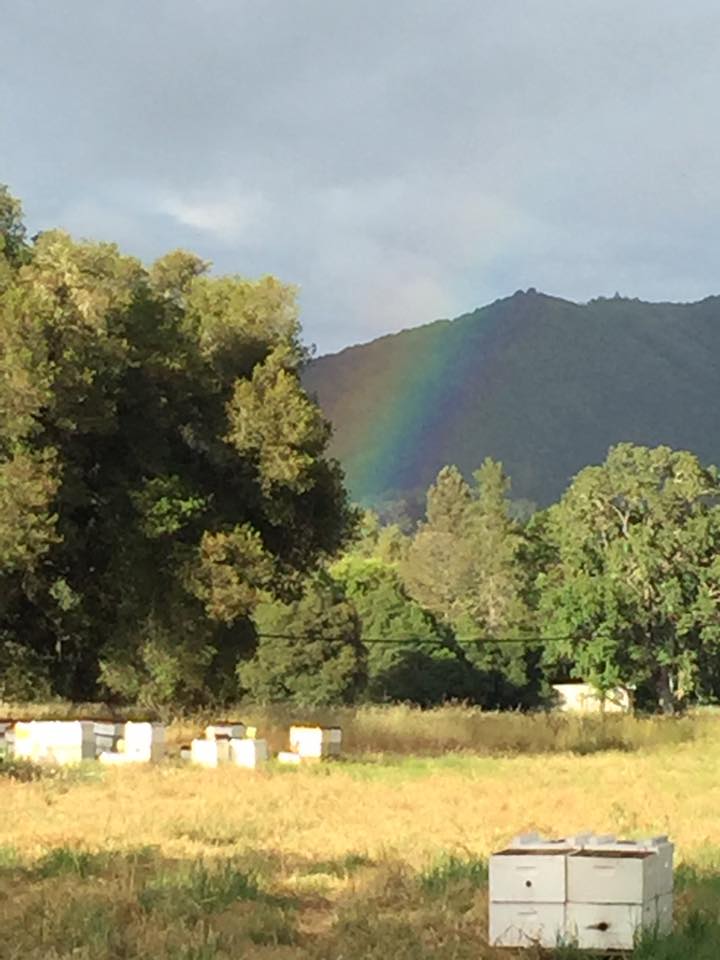
Health Benefits of Honey
The benefits of honey are universally accepted. Simple recipes using honey can offer natural relief to respiratory ailments, improve your energy and stamina, help to heal wounds, and reduce stress. In addition, pure honey is used in many beauty treatments as well. Preferred as a sweetener by the “carb” conscious dieter, honey is a natural alternative to using sugar.
Recently, studies indicated that honey has significant natural antioxidant properties.
Antioxidants help protect the skin from the damage of UV rays, and help you keep your skin looking young. Honey is the perfect ingredient for your recipes! It contains vitamins and antioxidants, but is fat free, cholesterol free and sodium free! Antioxidants are important in staying healthy. The antioxidant called “pinocembrin” can be found only in honey. Research has shown that unlike most other sweeteners, honey contains small amounts of a wide array of vitamins, minerals, and amino acids. Honey, a rich source of carbohydrates, provides a quick source of energy.
There is only one food that includes all the substances necessary to sustain life, including water. That food is honey. A great healing aid, honey is known to combat infection. Honey is very soothing when applied to minor burns. It also helps prevent scarring because it attracts and absorbs moisture.

